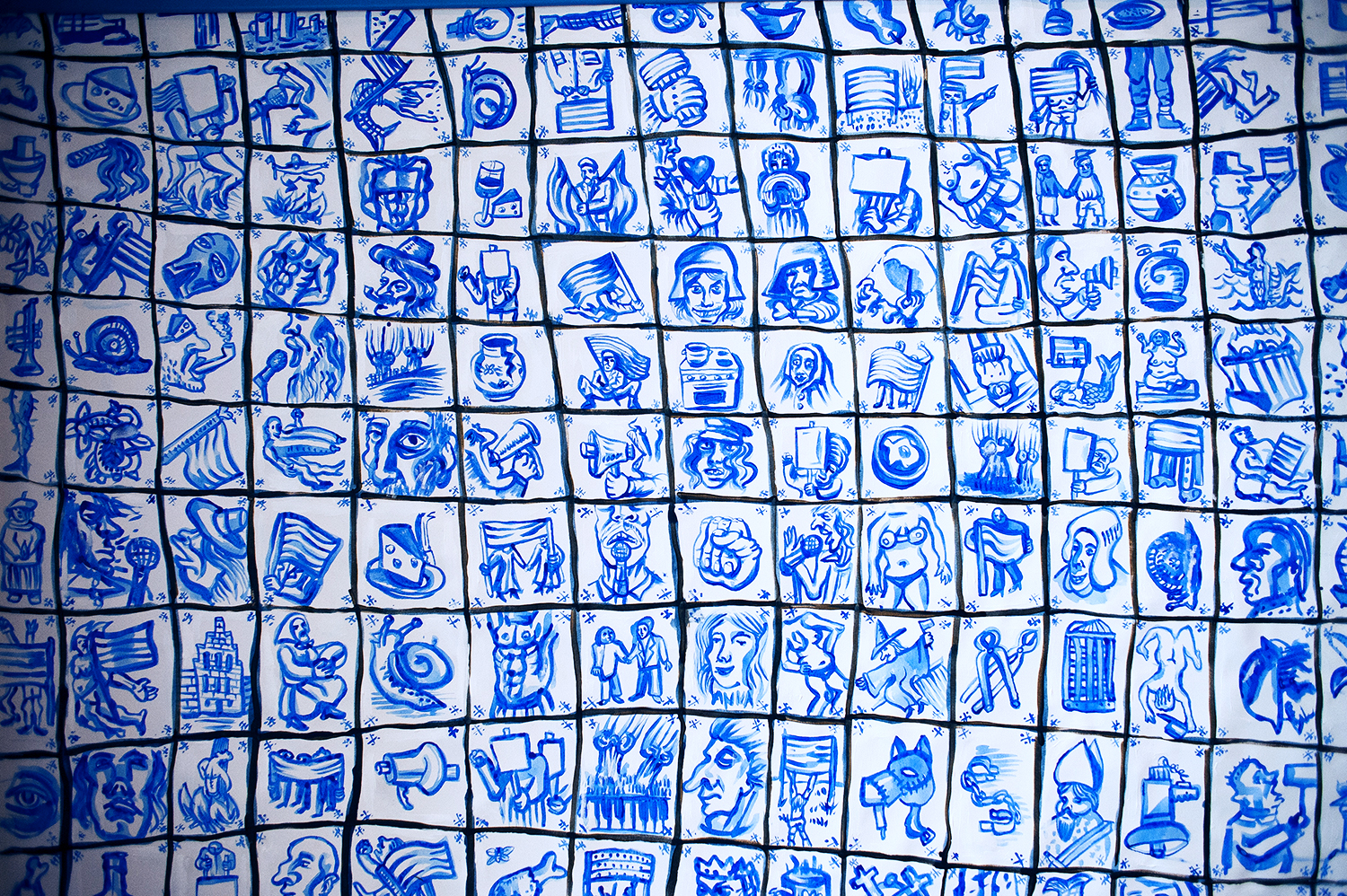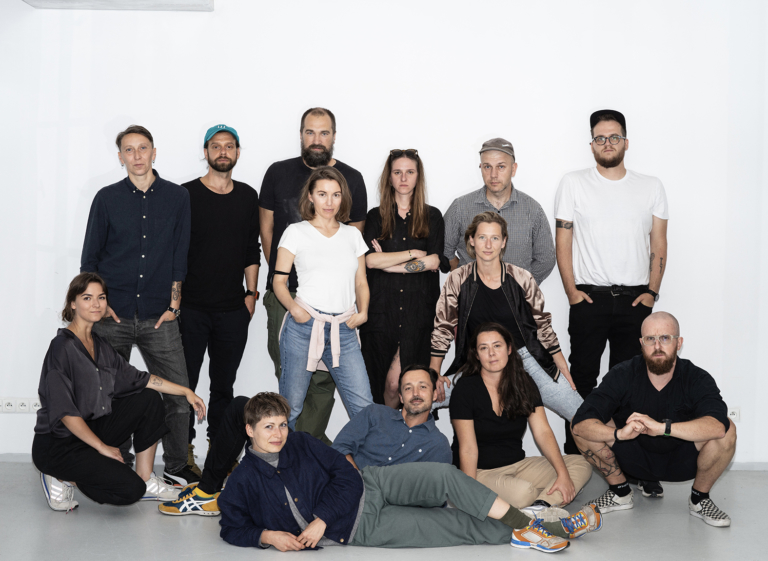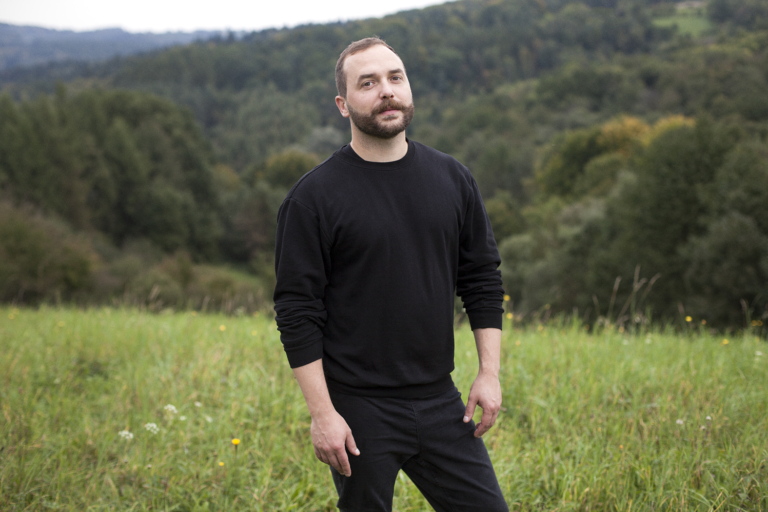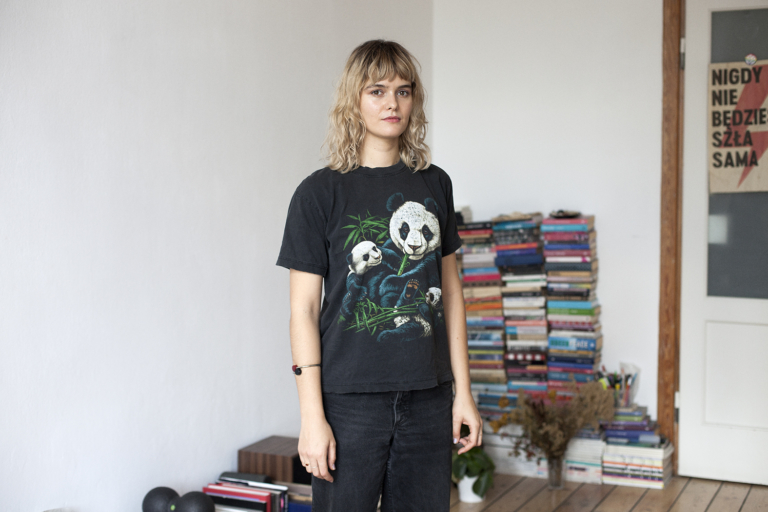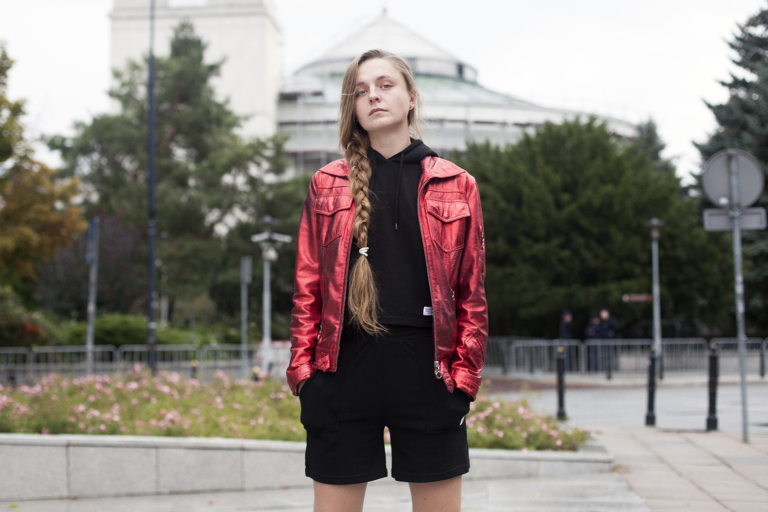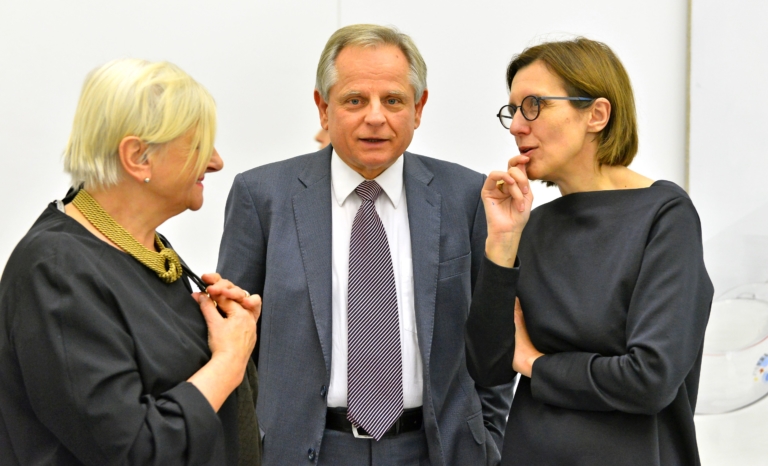No. 33
Demining fear
Mikołaj Sobczak, in conversation with Aleksander Kmak
Aleksander Kmak: While I prepared for our conversation, I thought about a couple of categories that seem to define your work well. To my surprise I discovered that the basis of all your endeavours is not at all the motifs used, the recurring themes or even the style. Above all, it is the compulsive need to tell stories and the constant reformulation of these stories. What is the significance of narrativity for you, a category that is somewhat problematic in contemporary art because, it would seem, it is quite conservative?
Mikołaj Sobczak: Weaving grand narratives has become the domain of populists today because it allows us to create what I call a community of imagination. We grew up in an era in which we were brought up with slogans: ‘Count on yourself!’, ‘Don’t look to others!’, ‘Be yourself!’ Only extreme individualism was a guarantee of happiness. And suddenly this heavily atomised society begins to crumble, as do the world’s economic markets. We don’t have money for our own flat, we go to psychotherapy, and we know the concept of a united group mainly from protests in big cities, which is still a gigantic success. In view of this, the right-wing spin doctors have come up with the idea that myth-making narratives should be reinstated in official circulation. Thanks to them, an unemployed young man threatened by economic migration can feel, for a moment, that he is an important defender of a ‘white’ Europe — that is to say, an imaginary one that never existed. Imagination is easier to control than facts. And it goes even easier when fear is mixed in with everything. Today, politicians owe their greatness to fighting contrived wars or defending values that have never been traditional. The community of imagination is one of the most effective weapons of propaganda. I therefore believe that it is our duty to disarm it, to defuse fear.
At the beginning of my art studies, I was mainly preoccupied with family stories. I had the impression that under the layer of these stories there was always something contradictory to the apparent order, which did not yet have its image or had even been consciously deprived of it. Like figures cut out of photographs — traumas passed on by grandmothers to their granddaughters. This shaped my sense of responsibility to give visibility to what has been erased, to materialise a history overlooked or distorted by memory or politics. Only this materialisation of inherited traumas allowed us to cleanse ourselves of them, to start seeing the positives in a reality shaped by right-wing fantasies.
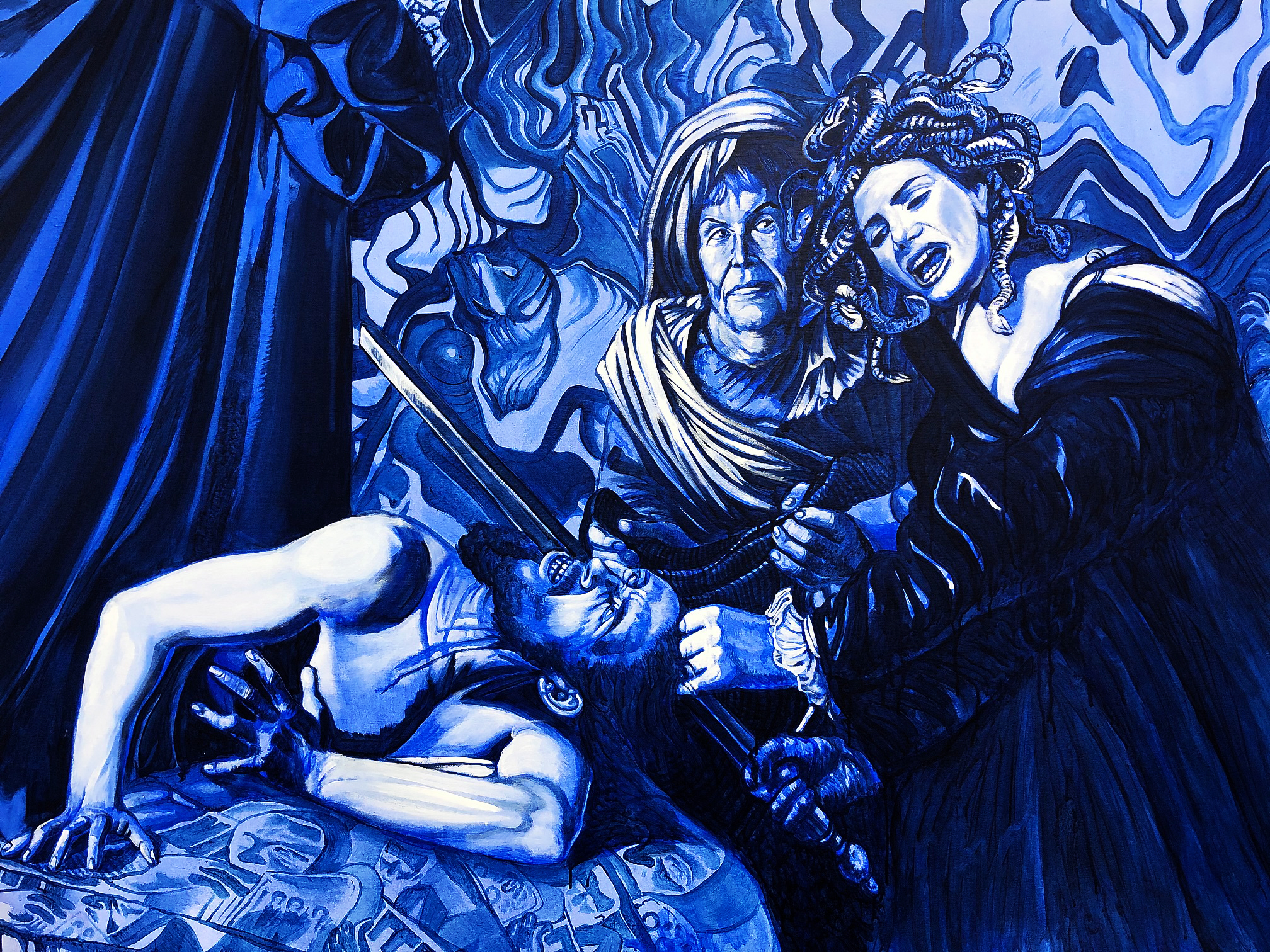
So, storytelling as an ethical obligation?
Yes, but that is not all. When I think back to my teenage self, I can clearly see that in the culture I grew up in — I’m talking about both mass culture and, for example, sacred art — I could never find any reflection of my identity. It seems to me, then, that the attempt to create a visuality for the stories excluded from it stemmed in no small part from a personal, introverted need to create a world in which I could find any representation of myself. It was only years later, when I started dealing with queer themes, that I noticed that non-normative content had always been somewhere in sight, but due to a lack of training, knowledge and experience, it remained completely invisible to me. I sensed it intuitively. I was fascinated by Baroque, ecclesiastical, gloomy splendour, something that, reflected in my works, could be called camp. The obsessive attempt to understand who I am and why none of the paths to a happy family life that culture serves up appeal to me was the first impulse to face the incoming stories of people close to me. I wanted to formulate from them a different story, free from sacred belief.

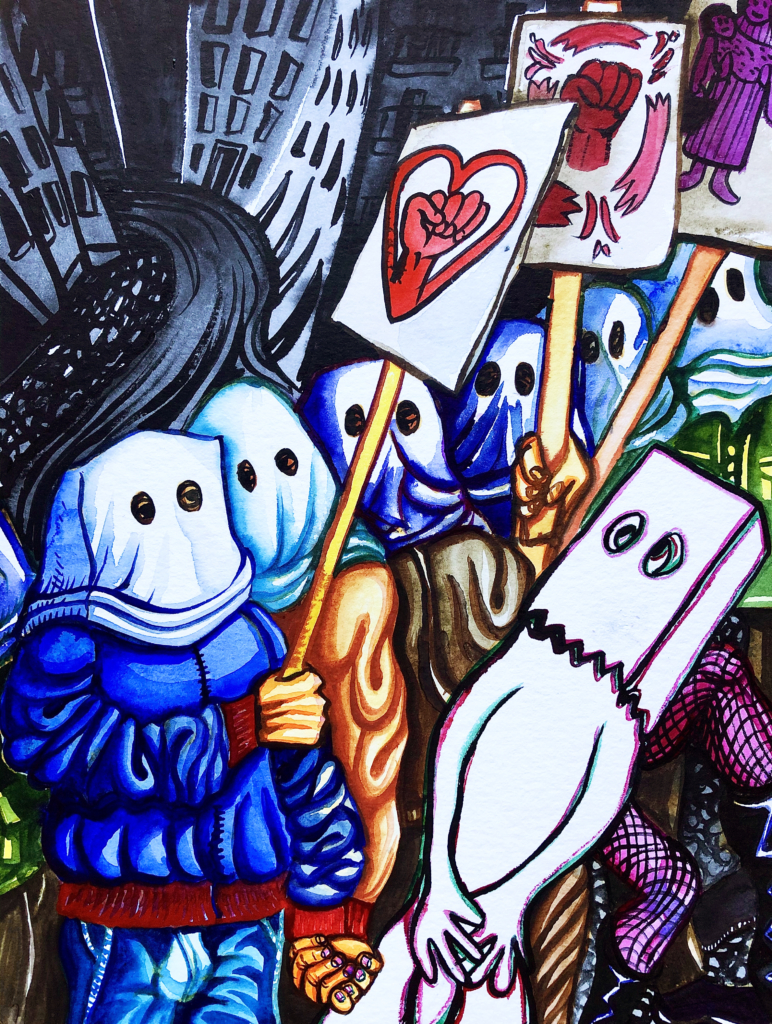
This is clearly one of the key motifs in your work — I see it especially in the figure of the Stranger: one who sees differently, but also one who is seen differently, a bit like a monster, a bit like a deity. You’ve portrayed people as the Other: a drag queen, a Mennonite, the leader of a radical heretical movement . . . What is this figure after all its transformations and incarnations?
The stranger allows us to understand who we are — what value system we really follow and what ethnic or national affiliation we identify with. Encountering Otherness allows us to accurately map the prejudices, stereotypes and phobias that are ingrained in us. The Other is a figure that initiates a process of conscious self-reflection. Without the Other there is no Normal, and the Stranger defines the Familiar. Therefore, the figure of the Stranger is also an inalienable part of the propaganda machine, and its aim is to produce a very specific line of thinking based on simple divisions. The fear of confronting the unknown is actually the fear of confronting oneself. Our existing comfortable order then cracks, and we don’t have time to work out a new one. This is understandable — we’re paying off loans, fulfilling ambitions, looking for alternative systems.
It is therefore necessary to creatively capture the Other and use it to create anti-discrimination narratives — ones that attempt to produce thinking outside of ready-made patterns, without all the power machinery and matrices of exclusion. Anyway, I find the tension of having to face strangeness myself, but also identifying it, extremely fascinating.
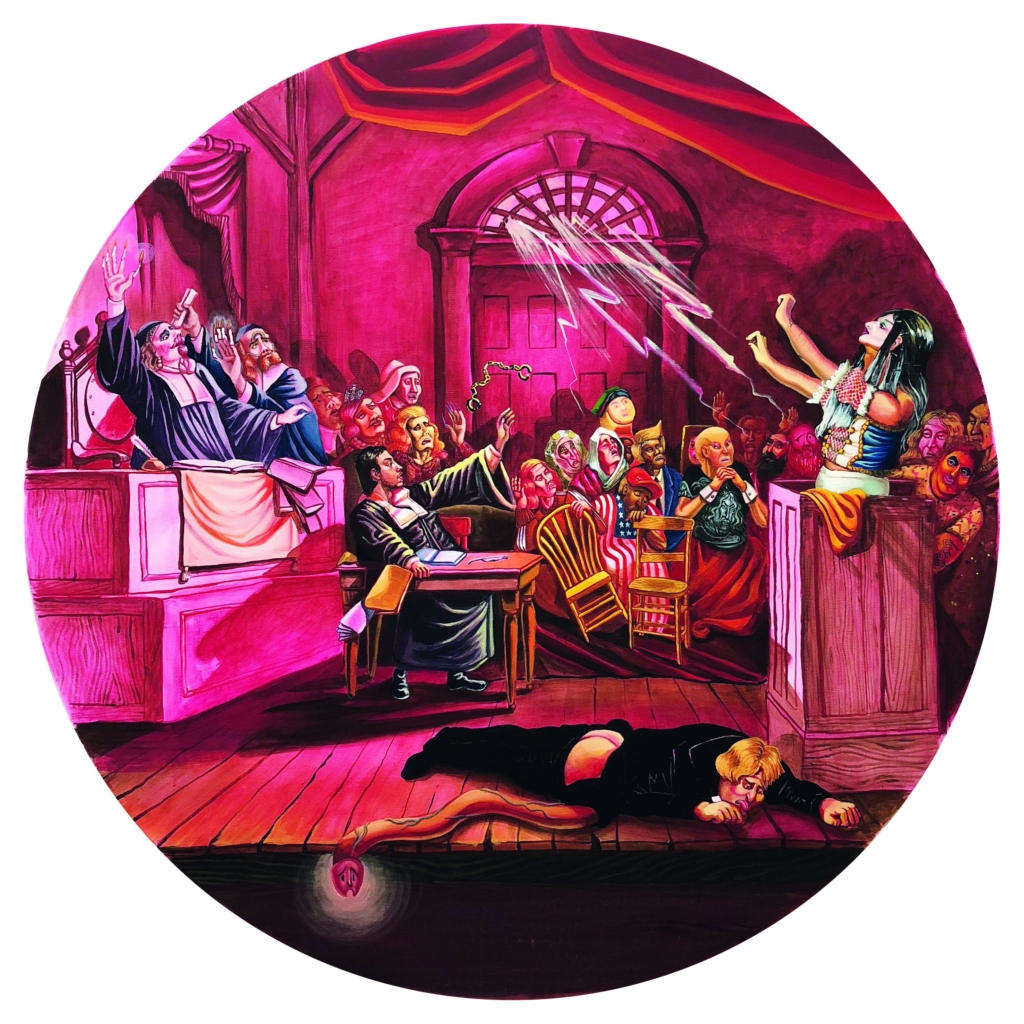
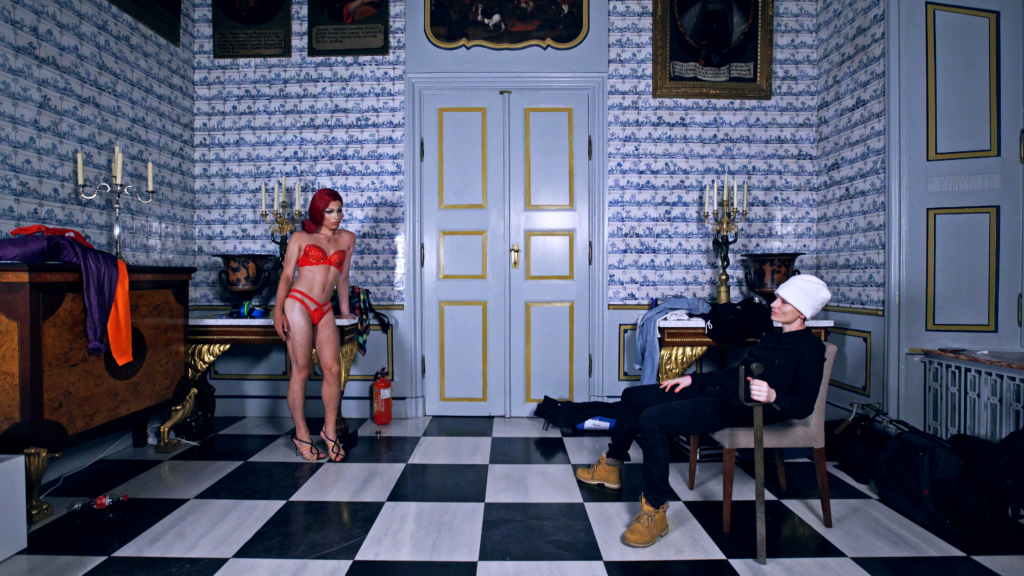
It’s interesting that you talk about the kind of subversive thinking that would be able to produce non-normative narratives and subjectivities outside of ready-made matrices. After all, you do not shy away from didacticism in your paintings, preparing indexes or descriptions to accompany exhibitions, in which you list the motifs used and decode mythological and iconographic references and inspirations. It’s a bit of a paradox, don’t you think?
I don’t see myself as an educator. What you’re talking about comes more from my focus on creating a community that shares knowledge and values. As I mentioned, as a teenager I couldn’t find my reflection in the culture because I lacked the right cipher to break the code. Indexes are just such a cipher handed to the audience on a platter. I treat them as open, ready-to-use sources that can resonate with others.
Besides, I like the fact that they make the reception of the works two-level. One stage is viewing without detailed knowledge — such raw viewing, without recognizing the characters as drag queens, transgender activists, politicians. At this stage, the opposite happens — you accept the elements of the image as a unity, within the overall aesthetic impression. This is where the enormous potential for achieving equality is revealed. Collage compositions of figures from different times, backgrounds or worldviews presented as one group reveal the absolute foolishness of divisions and social fears. We can be next to each other without prejudice and have a lot of fun at the same time. I am firmly opposed to simplistic, binary thinking. Instead, I develop a childlike, perhaps naive affirmation of a reality in which, regardless of governmental visions, representatives of different groups function together as a collage that is worth learning to notice, just as it is worth appreciating the importance of gestures that, here and now, can soften any hostility or invisibility of those living with us from below. Dreams of revolution as a set of grand, rebellious gestures tend to lead to a rapid burnout of enthusiasm and disillusionment with the slowness of change, and thus end in passivity that allows the lurching regime to persist.

The collage in general seems to be an important trope in your work. I have the impression that it usually serves to show you that there is no single, stable and steady knowledge, because it always bears the trace of a cultural or social context. Your duet performances with Nicholas Grafia document this very well — by playing on racial and cultural differences, you show the fallacy of such oppressive, usurping knowledge. On the other hand, your art clearly echoes a belief in universal categories — such as the affirmative utopianism of art.
The notion of universality is a slippery one today, but I like to think about it because art is a laboratory of reality. I want to talk about specific problems, constantly remixing them with the so-called broader context in order to make them work like a pop song. It doesn’t matter where the singer comes from, or if she sings about her own experience, because there is a completely different level of emotion and experience at work here, connecting us to each other, enabling us to identify ourselves.
Therefore, in my collaboration with Nicholas, it was very important for me to realise that despite the huge cultural and historical differences between Poland and the Philippines, the mechanisms of identity- and myth-making processes are similar. They are based on resistance to oppressive power, differentiation from it, as in the relationship between masters and slaves. Exposing these non-obvious entanglements is the reason why I try to stay on the slippery ground of universality, however. And although it is a challenge doomed to failure, there is an appealing beauty in it. The very attempt to unify my work is first and foremost about learning to listen again and again to what other people have to say, about developing a willingness to take on someone else’s perspective, to challenge familiar assertions.
The right frame thus allows us to see that the individual story is a symptom of universal history, and the particular case is a metonymy of global mechanisms.
Once, when I was interested in shamanism, I experimented with reducing stimuli to achieve a trance state. Lying in a lake after a week or so of fasting, I had a vision of the clear connections between all things — tiny crystalline threads whose destruction or disruption disturbs the overall harmony . . . In restoring these connections, it is not only about reflecting the collage-like nature of our experience of the world, but above all about developing a critical attitude and awareness of functioning within large global mechanisms that produce normative knowledge and value systems. Recognising these connections can make us develop non-canonical ways of interacting with the world, new forms of experience and languages of its expression, through which we transcend the limitations of false dualisms.
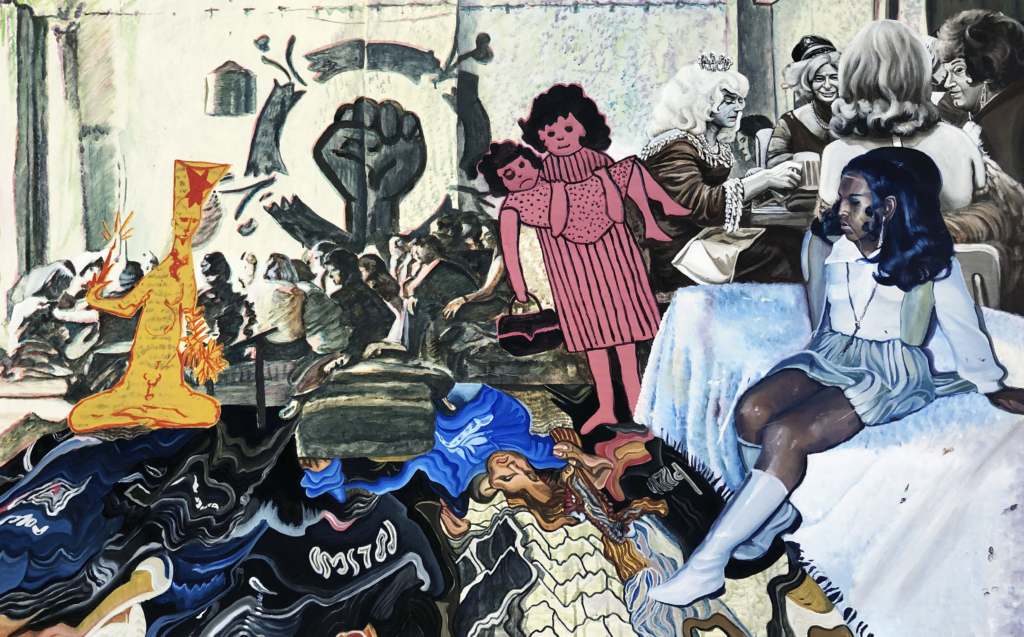
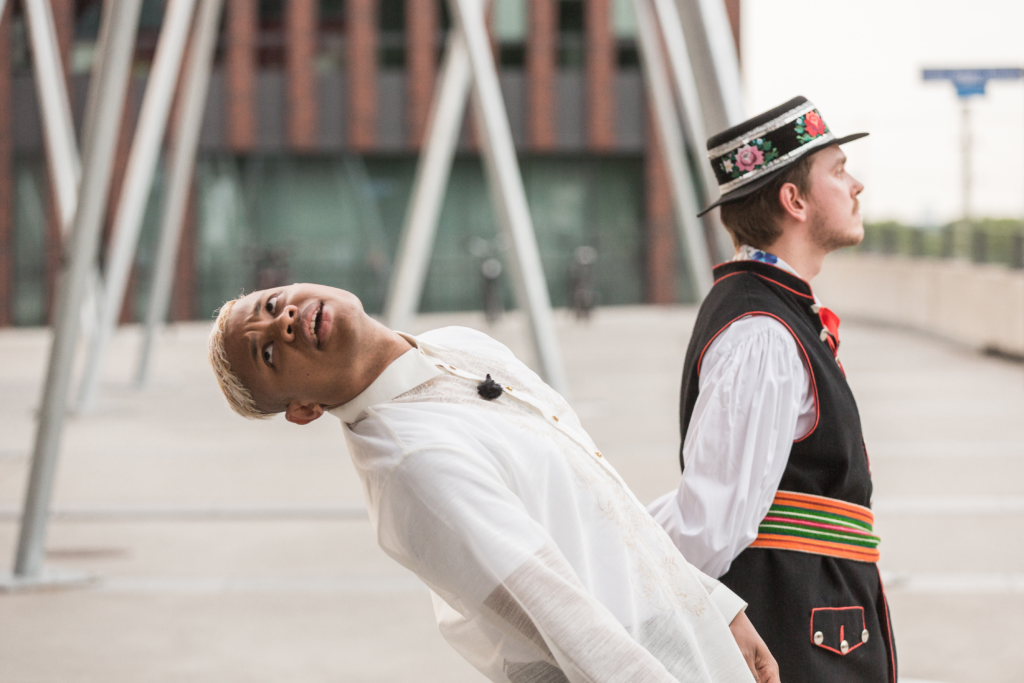
Aleksander Kmak — film expert and art historian, PhD student at the Department of Film and Visual Culture of the Institute of Polish Culture at the University of Warsaw. He works in contemporary experimental cinema and film theory. He has published in Kwartalnik Filmowy, Widok, Pleograf, Ekrany, and regularly collaborates as an art critic with Szum magazine.
